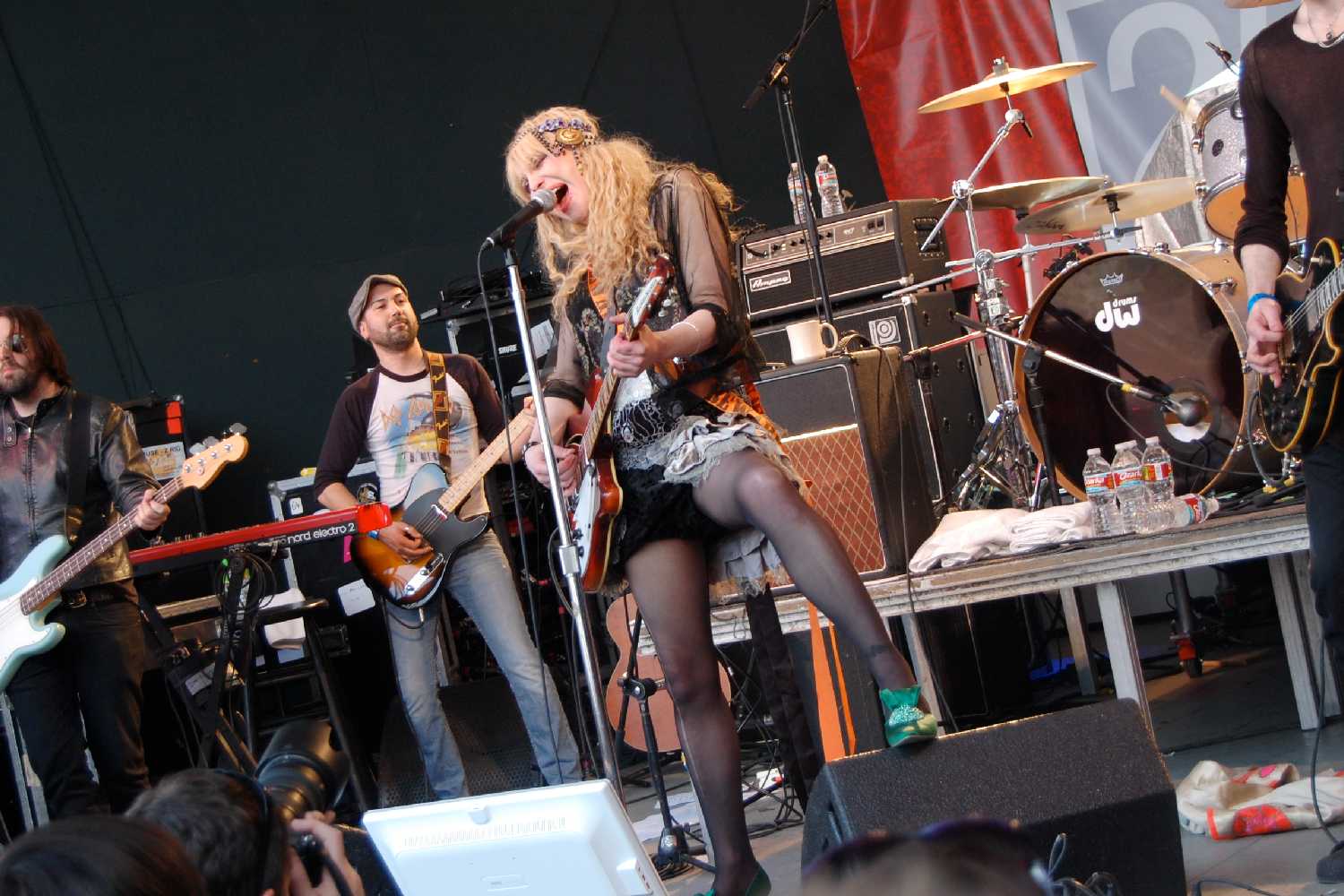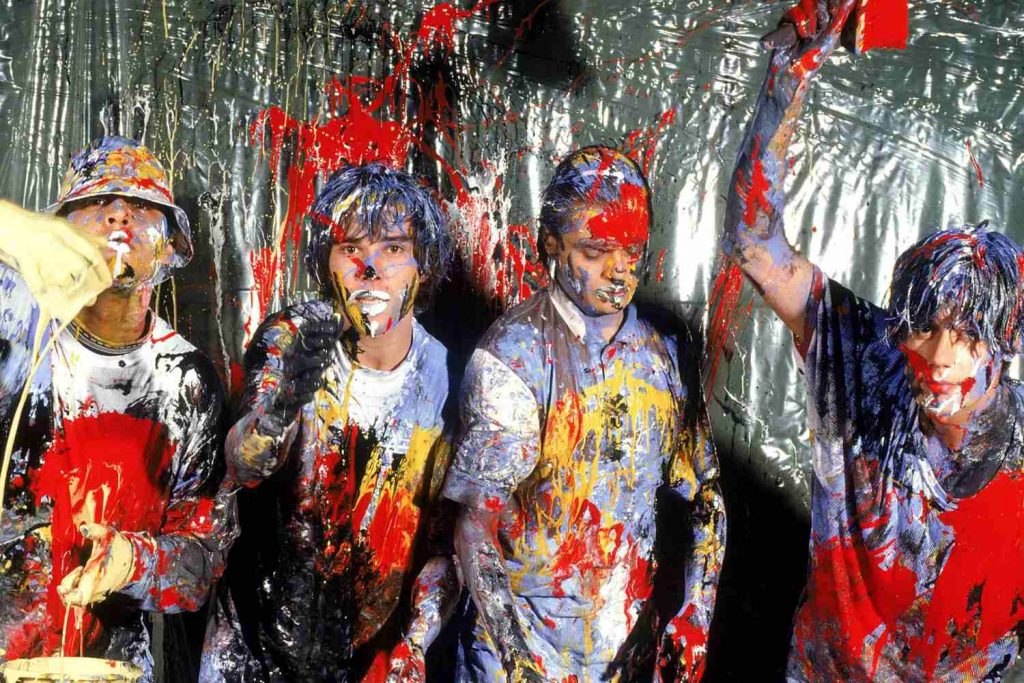Diving into the gear used by Courtney Love throughout her performances with her band Hole - the original grunge rock diva with an earth shatteringly powerful sound.
Known for her rebellious spirit, raw talent, and endlessly captivating stage presence, you’d be hard pressed to come by a rock singer quite like the inimitable Courtney Love. Born on July 9, 1964 in San Francisco, California, she originally rose to prominence as the front woman of the band Hole, and became one of the leading figures of the grunge movement in the 1990s.
Love’s musical journey began in her teenage years when she discovered punk rock and immersed herself in the vibrant music scene of Portland, Oregon. Her early influences, ranging from The Stooges to Patti Smith, shaped her distinct style and unapologetic approach to both music and life.
Read all the latest features, columns and more here.
In the late 1980s, Love formed the band Hole, which became a platform for her fierce songwriting and balls to the wall, cathartic performances. With her powerful vocals and emotionally charged lyrics, she drew audiences in and created an intense connection with her fans, who connected with her strikingly honest explorations of female rage. Hole’s breakthrough album, Live Through This (1994) showcased Love’s songwriting abilities and cemented her status as an influential force in alternative rock.
Today, we’re diving into some of the gear Courtney Love has used and abused throughout her storied career in order to create her explosive grunge sound.
Fender Jazzmaster

Love was pictured playing a Fender Jazzmaster several times throughout the early to mid 90s. Synonymous with alternative and indie rock sounds, though there’s little reportage of Love’s decision to rock this guitar, it’s an unsurprising choice for a grunge artist. The Jazzmaster was extremely popular with rock musicians of Love’s milieu at this time due to its unique tonal qualities, with artists like J Mascis of Dinosaur Jr, Thurston Moore of Sonic Youth, and Nels Cline of Wilco all contributing to the guitar’s association with unconventional sounds, atmospheric textures, and experimental playing styles.
Green Mercury
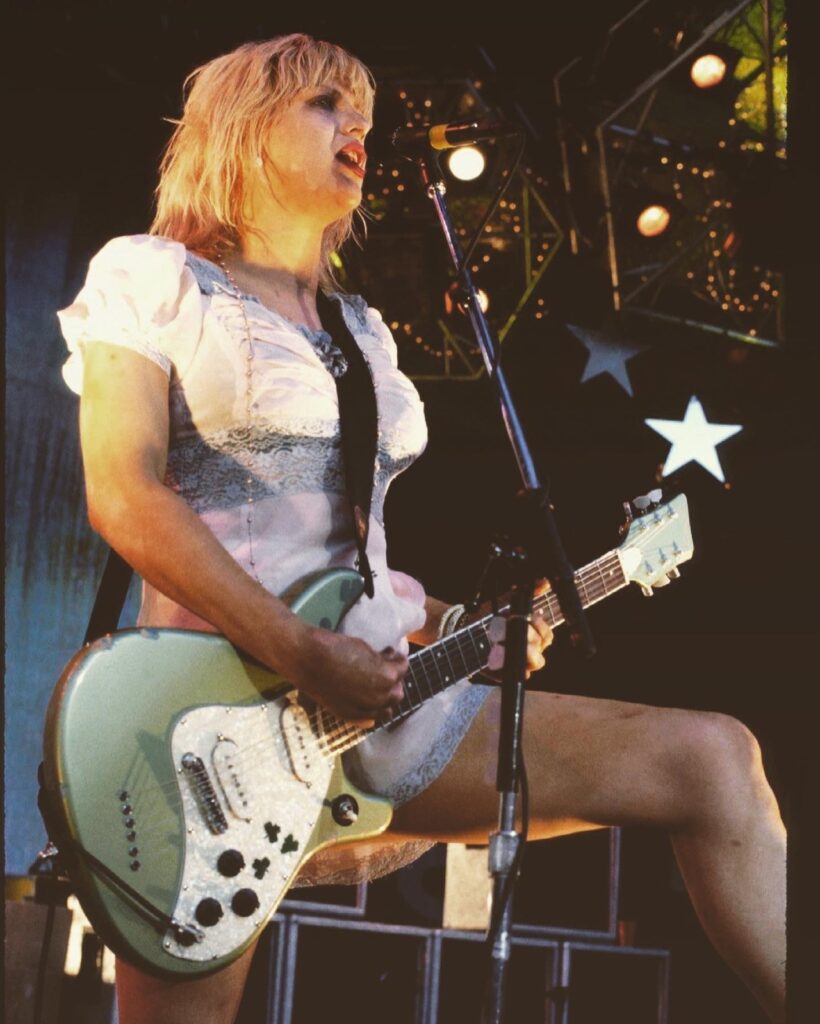
Tim George and Danny Babbitt, based in Atlanta, Georgia, were the original creators of Mercury Guitars. They began working on the design of the guitar in 1992, drawing inspiration from smaller Rickenbacker models. Initially named “Gemini,” they eventually settled on the name “Mercury” for its timeless appeal. The guitars were designed to be mass-produced, featuring a string-through-body design using parts from a local hardware store.
After creating the first prototype with a brown sunburst body, Tim and Danny gained momentum. They sold guitars of various colors to musicians like Collective Soul, Head Hunter, and Porno For Pyros. They even built a metallic green Mercury for Tim personally, which caught the attention of Courtney Love. Courtney purchased the vintage green Mercury, leading to a significant breakthrough for Tim and Danny. They also pre-sold a guitar to Pat Smear and obtained approval to build one for Kurt Cobain, but unfortunately, Kurt’s passing occurred shortly after.
Life became challenging for Tim and Danny due to personal issues, causing them to lose their passion for guitar making. Courtney reached out for more guitars before they left Georgia, but they were unable to fulfill her request. Tim later witnessed the Mercury guitar making music video history in Hole’s “Violet” video and saw it on the big stage during a Lollapalooza performance, bringing him happiness.
Courtney extensively played the Mercury, adorning it with four-leaf clover stickers and taping down the volume and tone knobs to avoid tampering.
Squier Venus
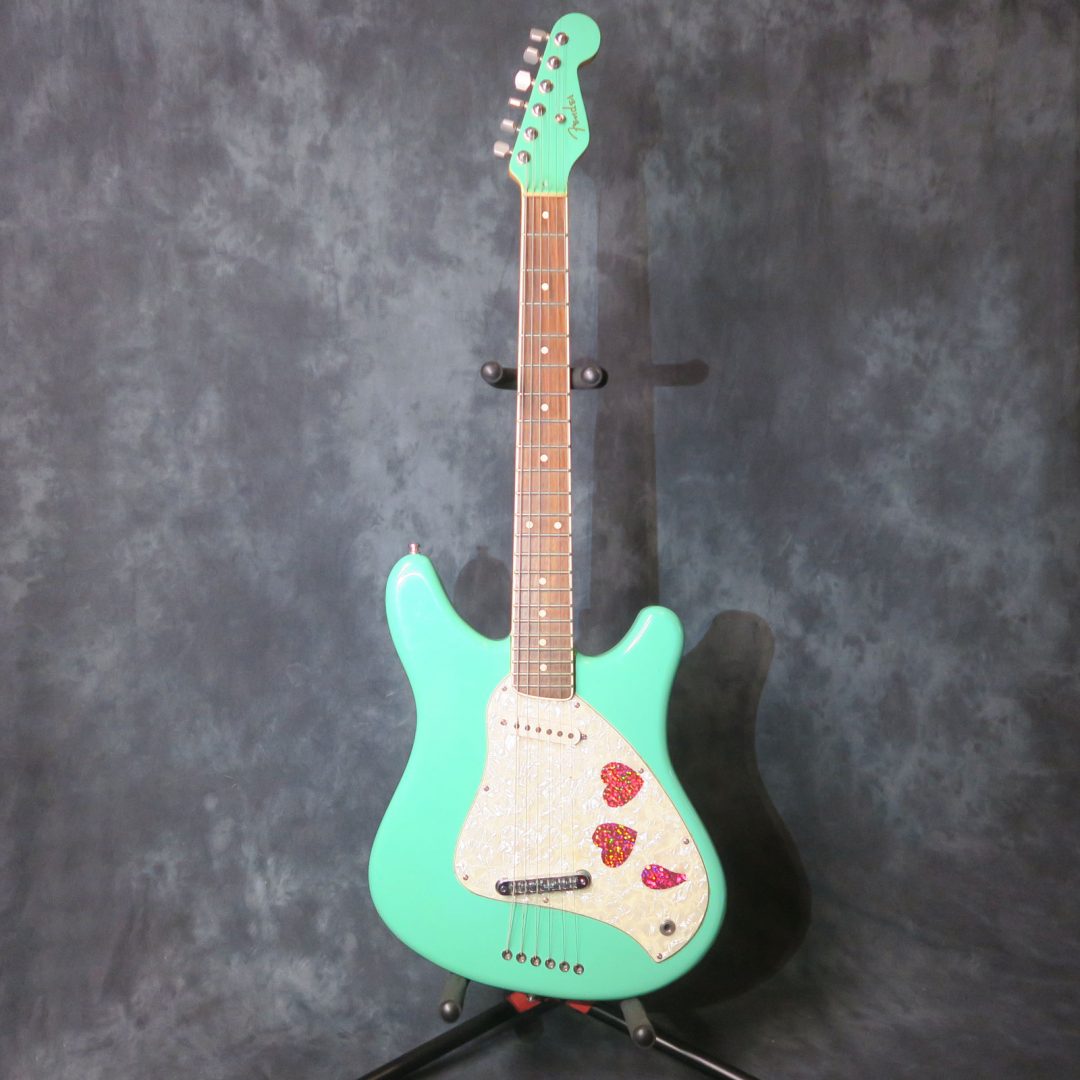
Courtney Love’s personal Fender Venus electric guitar was Masterbuilt in 1994 in the Fender USA Custom Shop. The Surf Green six-string guitar, one of only three prototypes ever made, was reportedly designed in collaboration between Love and Fender Artist Relations Builder Larry Brooks, who also crafted Kurt Cobain’s Jag-Stangs. This distinctive guitar with a single pickup was extensively used by Love both in the studio and during iconic performances, including Lollapalooza in 1994, Reading Festival in 1995, and the MTV Music Awards of the same year.
In terms of design, the Surf Green guitar introduced a completely new body shape for Fender, drawing inspiration from a smaller-sized Rickenbacker and the aforementioned Mercury that Love had previously played in the early 1990s.
Rickenbacker guitars

Love has been pictured playing a variety of Rickenbacker axe’s throughout her live performances with the Hole band, particularly at the beginning of her career, having stated in an archival Guitar World interview from 1999:
“I was really into Rickenbackers when I was starting out, because of the 3/4 neck, but I don’t play them as much anymore.”
Effects and Amplifiers:
Electro-Harmonix Big Muff Pi
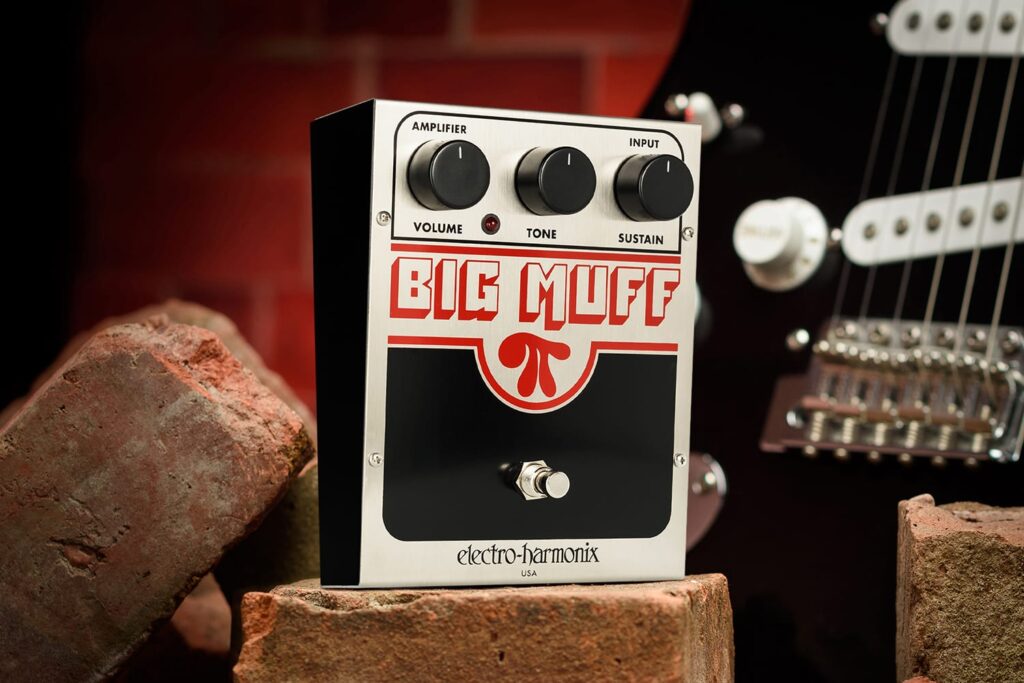
In the aforementioned 1999 Guitar World profile, Love claims that there is one very important aspect of the Seattle/Olympia/Portland grunge guitar legacy that Love claims as her own:
“I contend that I was the first person to actually have a Super Fuzz Big Muff, before the rest of the boys… It was when I was in this purist Sixties garage band called the Venerays, with Kat Bjelland. And just recently, I started using a box called the Mystic Blue. I like a good box and I’ll try any one – if it has a good-sounding name. Especially if they made a box with some kind of girly name. If they made one called Cherry Apple Blossom, I’d run with it every night. Maybe I’ll get Fender to do that next.”
Boss DS-1 Distortion
At 4 minutes 28 of this live recording of Hole playing “Doll Parts”, you can see Courtney using a Boss DS-1 Distortion pedal. When engaged, the DS-1 delivers a wide range of distortion tones, ranging from mild overdrive to heavy distortion, making it suitable for various music genres, including rock, metal, punk, and of course, the grungiest of grunge.
Randall Commander II
Hole’s 1999 Guitar World profile states that:
“For the Celebrity Skin sessions, Love plugged into a variety of amps, including Fender tube gear, Matchless, Ampeg, Silvertone and a solid-state 1976 Randall Commander that formerly belonged to Love’s late husband, Kurt Cobain. “He did like his Randall Commander,” she says.”
This amplifier head offers a range of tone-shaping controls, including gain, bass, mid, treble, and presence. These controls allow guitarists to fine-tune their sound, shaping the lows, mids, and highs to achieve the desired tonal characteristics. The gain control enables players to dial in various levels of distortion, from a smooth overdrive to a more aggressive and saturated distortion.
Mesa/Boogie Studio Preamp
At around the 1:59 mark in this video, you can see Courtney Love using late husband Kurt Cobain’s previous touring rig before his death, which consisted of 2 Mesa Boogie Studio Preamps, and 2 Crest 4801 Power amps. Courtney began using this rig after Kurt tragically died in 1994.
Keep up to date with all things Courtney Love here.
